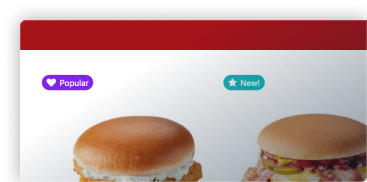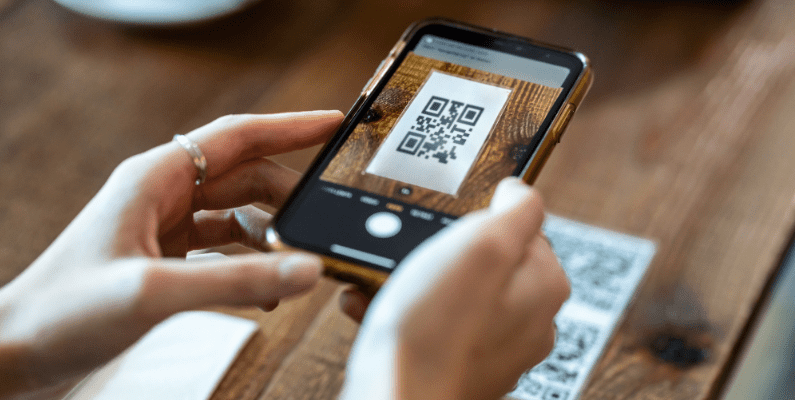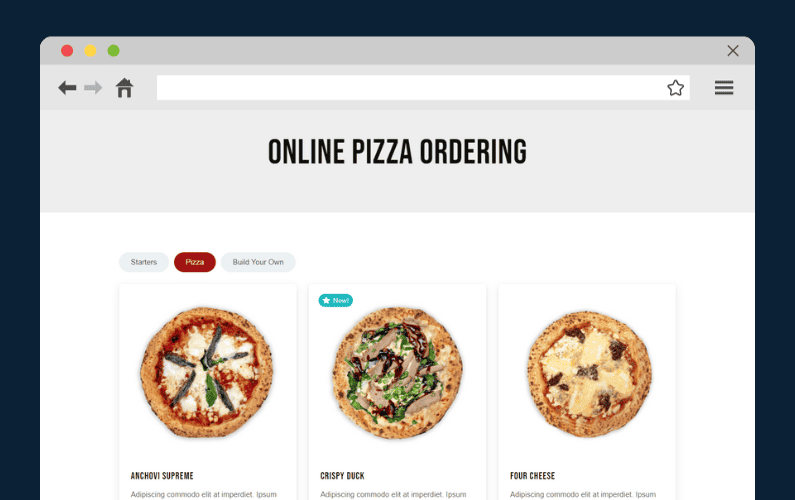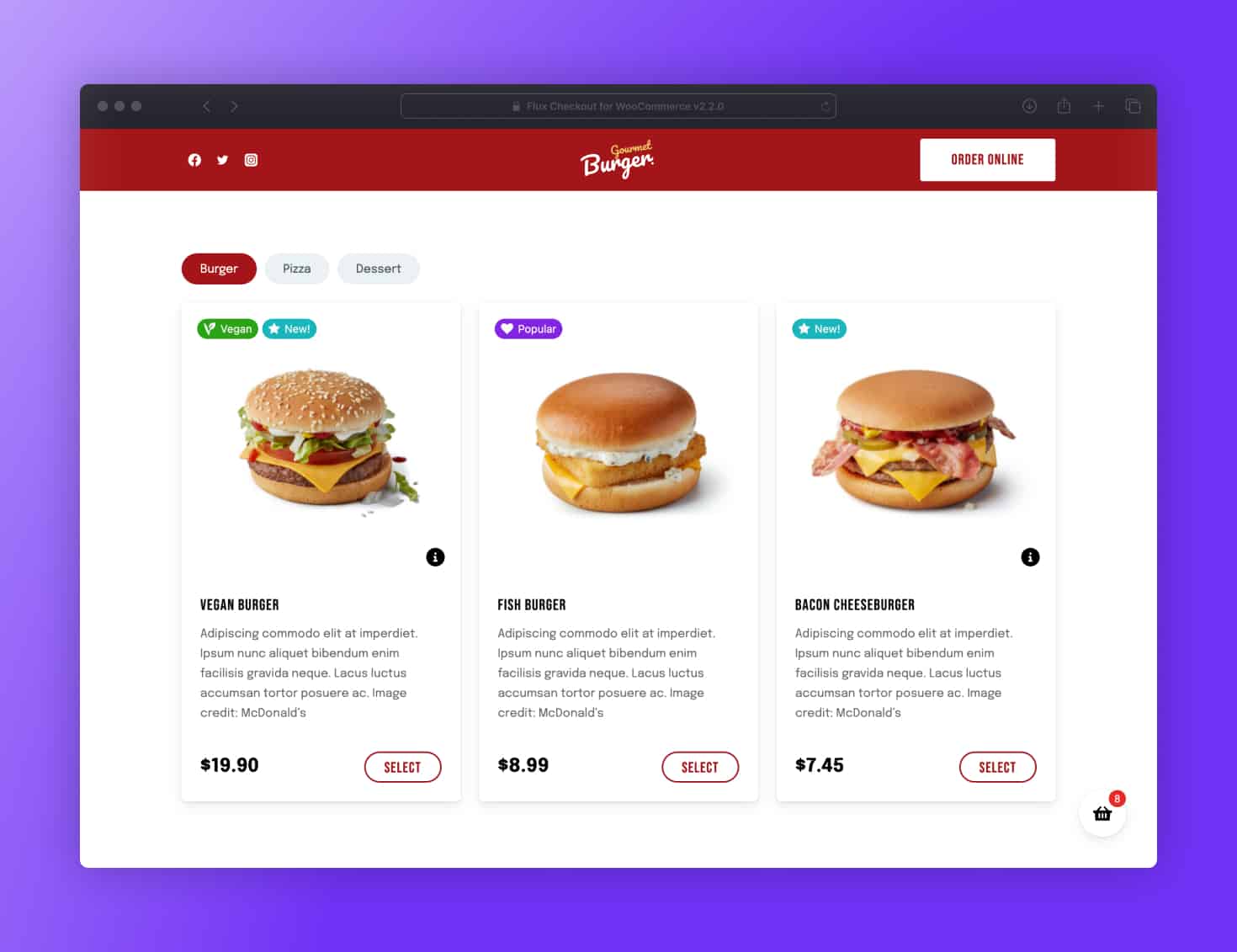
If you’re a restaurant owner, you might be looking at all the restaurant marketing tools available to you, and are feeling a little overwhelmed.
After all, you have a restaurant to run, and while dealing with the ins and outs of restaurant life, marketing can be pushed to the side.
👋 We’re here to help. In this guide, we’ll walk you through the only six restaurant marketing tools you need to use to see success.
These six tools don’t all have to be used at the same time. Even just using the techniques in this article for one of the tools, will improve your restaurant marketing significantly.
For each tool we’ll go through the following:
- The benefit of using the marketing tool.
- A basic way you can use the tool.
- A more advanced way you can use the tool.
By breaking it down in this way, you’ll be able to decide if you have the time to implement the basics, or use some more advanced methods for your restaurant marketing strategy.
Marketing tool #1: An effective website with an online ordering system
The first restaurant marketing tool you have up your sleeve is your restaurant website.
Your website is perhaps one of the most effective tools you have in marketing your restaurant and increasing sales.
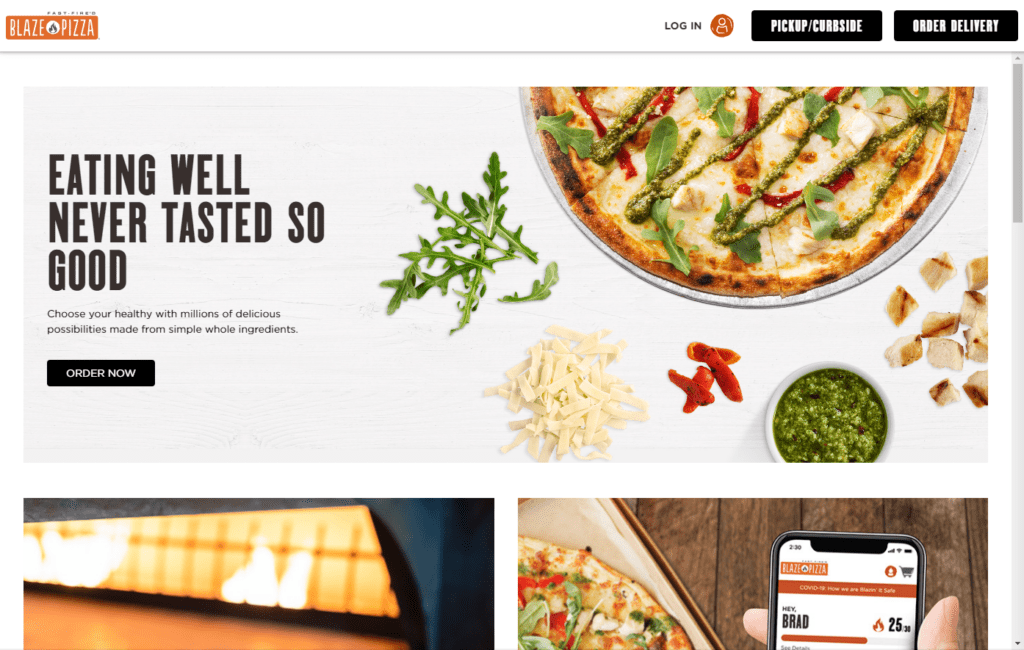
A well-designed and user-friendly website is crucial for attracting and retaining customers in today’s digital world. But more than that, it should also be a tool to allow customers to place orders online.
If you want customers to be able to order for pickup, delivery, or table ordering, setting up your website as an online ordering system is a must.
Here’s why:
- Increased revenue: Allowing customers to order directly from your website can lead to higher profit margins, as you avoid paying commissions to third-party food delivery platforms.
- Improved customer experience: Offering convenient pickup, delivery, and table ordering options can improve customer satisfaction and encourage repeat business.
- Streamlined operations: Integrating online ordering into your website can help automate and streamline order management, reducing the chance of errors and miscommunication.
- Access to customer data: By enabling customers to order directly from your website, you can collect valuable customer information to help personalize marketing efforts and improve customer retention.
- Customizable menu: With direct online ordering, you can easily update and customize your menu, including promotional items or limited-time offers, without relying on third-party platforms or printing a physical menu.
- Increased table turnover: With table ordering, customers can place their orders quickly and efficiently, leading to faster service and higher table turnover rates.
To do this, you’ll need some help. In this case, we recommend the WordPress plugin, Orderable.
Introducing the Orderable plugin for online ordering
Orderable is the perfect solution for any restaurant owner looking to add a powerful online ordering system to their WordPress website. Whether you’re offering pickup, delivery, or table ordering, this plugin is designed to help you manage your restaurant effortlessly and without any added fees.
💡 If you’re starting from scratch and need to set up a restaurant website, check out our comprehensive guide on creating an impressive restaurant website from scratch.
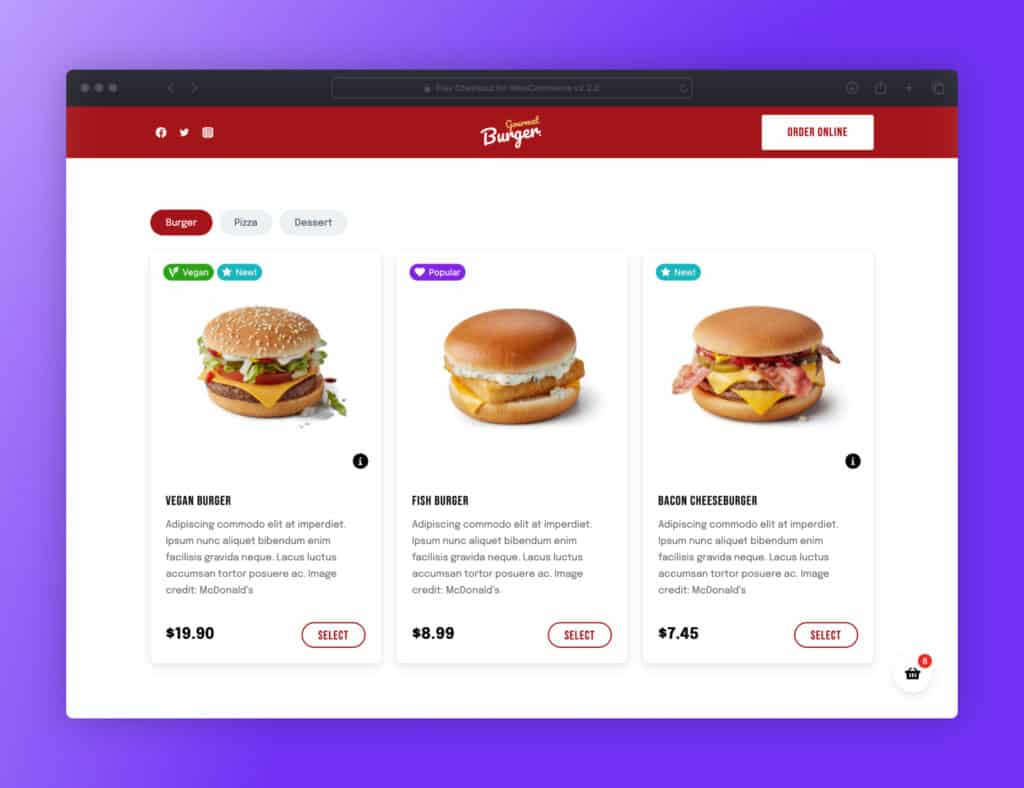
Why choose Orderable?
Orderable is an effective and user-friendly plugin designed specifically for restaurant websites on the WordPress platform. It offers a wide range of features that can help streamline your online ordering process, boost sales, and improve the overall customer experience.
Here are some key reasons why Orderable is the ideal choice for your restaurant:
- Easy setup and customization: Orderable allows you to set up your online ordering system in minutes, with no coding skills required. You’ll have full control over your ordering process, promotions, prices, restaurant branding, and more.
- Delivery and pickup time slots: Manage your restaurant’s operations seamlessly by setting specific delivery and pickup times, maximum order limits, holidays, lead times, and more.
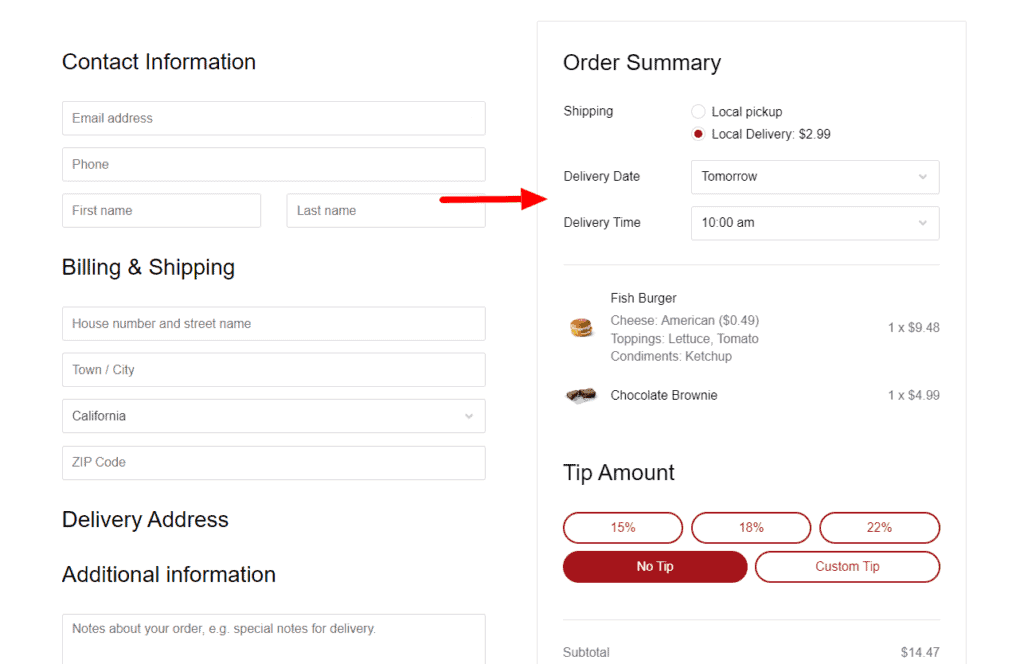
- Ready-made product layouts/restaurant menus: With the plugin’s pre-designed layouts, you can effortlessly create an attractive and easy-to-navigate online food-ordering menu.
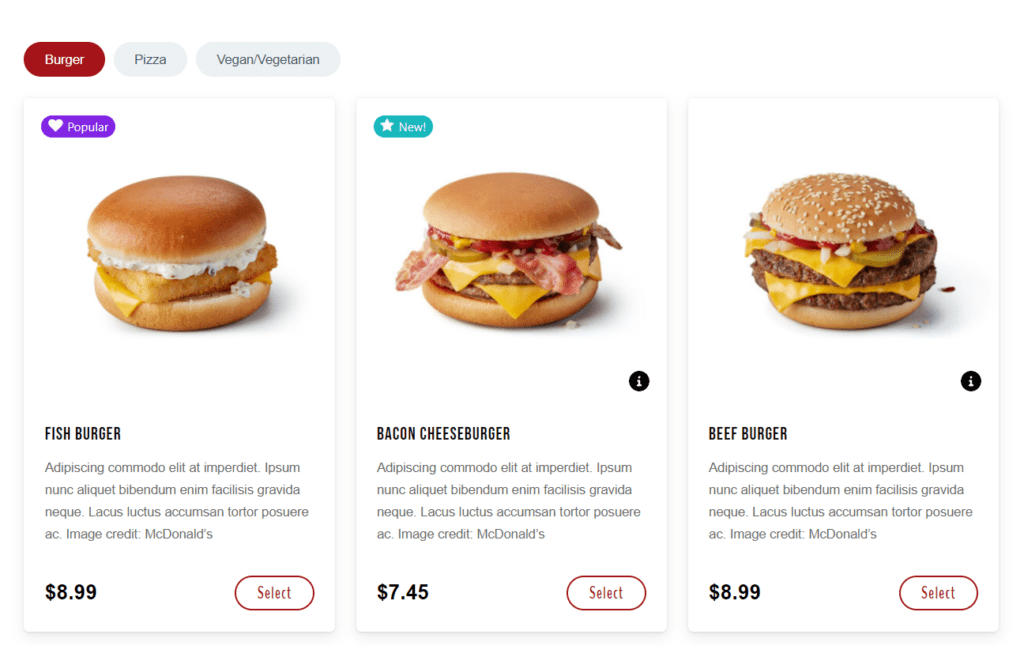
- Keep track of orders: Orderable integrates with WooCommerce’s built-in ordering system and provides a customized order management screen to help you stay on top of your orders.
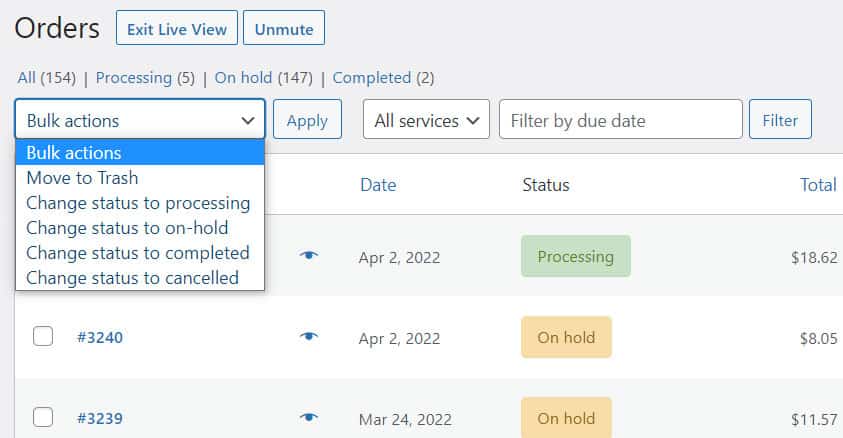
- Sales-boosting features: Orderable offers a range of features like checkout tipping, order bumps, and product add-ons that can help increase your average order value and overall revenue.
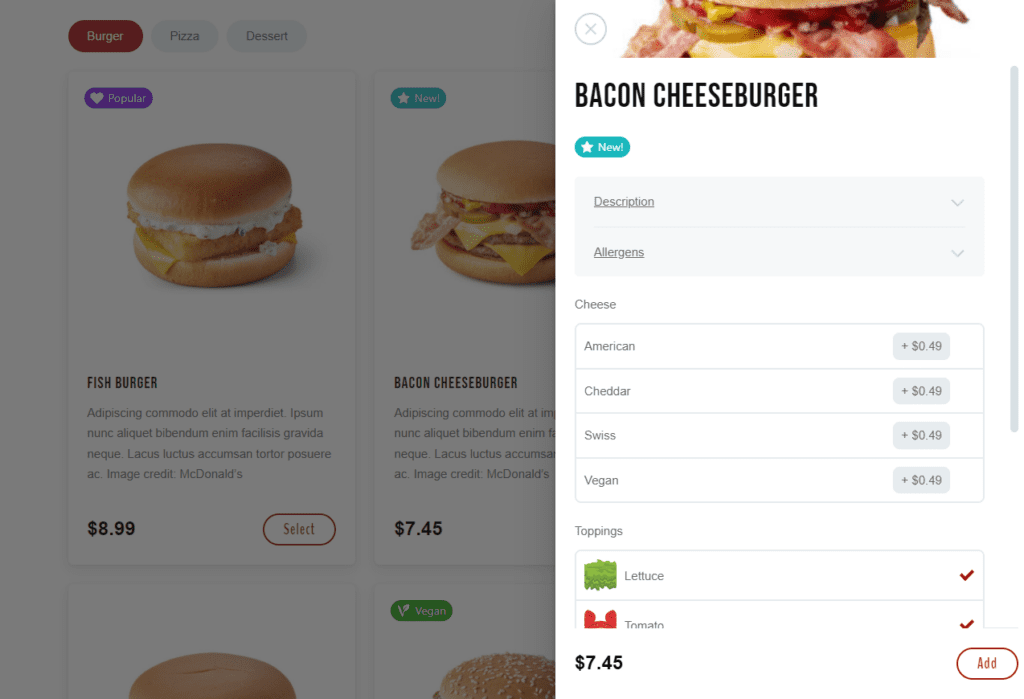
- Customer-first approach: The plugin’s app-like design, nutritional information, product labels, and WhatsApp & SMS notifications make the ordering process user-friendly and enjoyable for your customers.
Website marketing techniques based on your time/level of skill
So let’s say you have Orderable set up on your website. Let’s now take a look at some of the basic and advanced things you can do with this restaurant marketing tool.
Basic: Create your online menu
The most basic thing you can do with Orderable is create your online menu. Adding products/dishes to WooCommerce is straightforward. Adding these to your online menu with Orderable takes minutes.
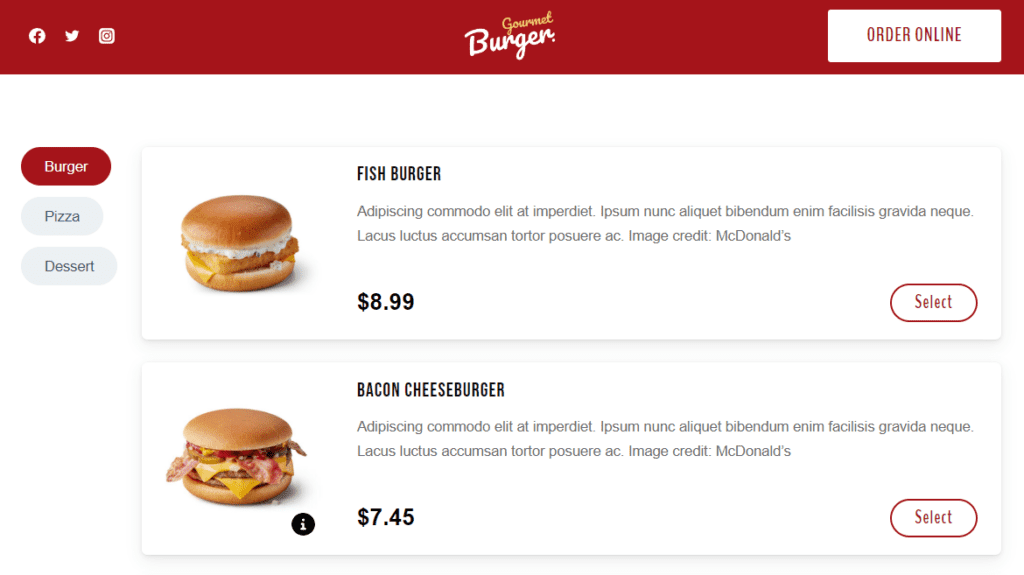
With this set up, you’ll be able to take orders online quickly.
Advanced: Offer special promotions
Orderable allows you to increase your restaurant’s revenue by automatically offering customers additional items. These order bumps can be anything from additional dishes they might like to order, to sides, sauces, or drinks.
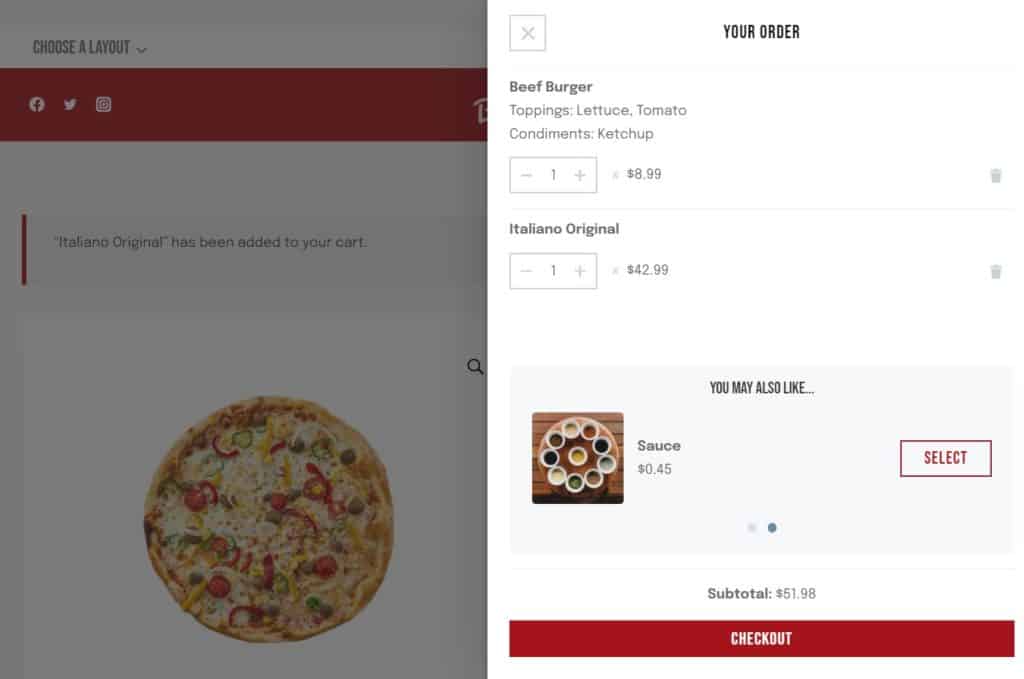
These offers are entirely customizable by you, but act as a great way to market new items to your customers without the hard work or staff training.
Marketing tool #2: SMS marketing for instant customer engagement
SMS marketing is a great way to engage with customers, promote offers, and drive repeat business.
Depending on how you use it, it can be a good replacement for email marketing if you’re shorter on time or email marketing skills.
By using SMS marketing, you’ll be able to not only keep customers in the loop about their order, but also market directly to their phone offers, discounts, and incentives. Of course, all keeping data compliance in mind.
SMS marketing techniques based on your time/level of skill
Here are some SMS marketing strategies to try depending on your skill level.
Basic: Send customers order updates and post-purchase thank you messages
If you have Orderable set up and running, you’ll be able to update customers on their order via SMS or WhatsApp messaging. These messages will inform the customer if their order is being prepared, on the way, or if it has been delivered.
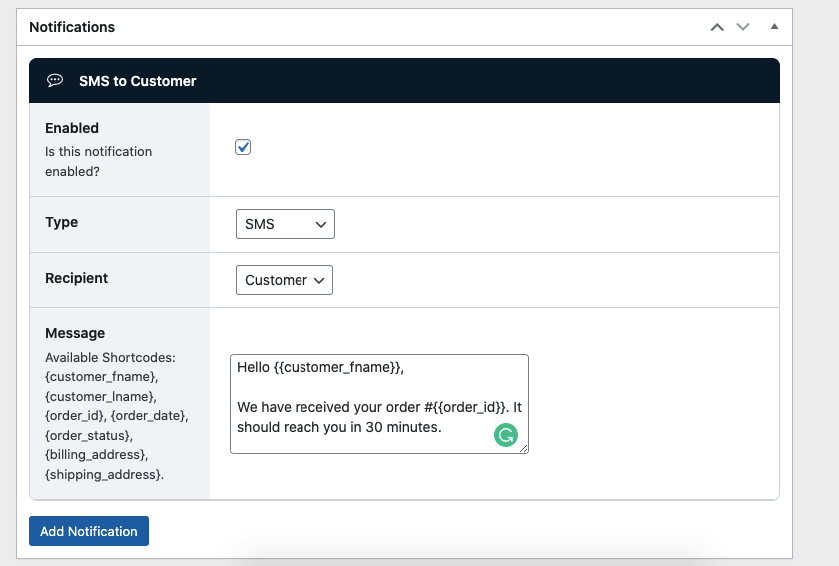
While using this technique, you’ll also be able to send them a message once the order is complete, asking them if they’d like to leave a review, or you could offer them a discount on their next order.
Advanced: Follow up with non-order specific messages
If you want to take this to another level, you could send customers SMS marketing messages that aren’t related to their order status.
These messages could update them on new menu items, seasonal discounts, events you have going on, and more.
Bear in mind, if you use this technique, you’ll likely need confirmation from the customer that you can use their number for marketing. Check your local compliance to be sure.
Marketing tool #3: Email marketing
Email marketing is perhaps one stage up from SMS marketing because it requires a little more initial setup and upkeep.
However, with the right email marketing strategy, you’ll be able to promote your small business effectively. Here’s why:
- Cost-effective: Email marketing is an affordable way to reach a large audience, making it a cost-effective marketing solution for restaurants.
- Building customer relationships: Regular email communication helps to keep your restaurant top of mind, fostering stronger connections with your customers and encouraging loyalty.
- Promote special offers: Email marketing is an ideal platform for sharing exclusive discounts, promotions, or limited-time offers, driving additional sales, and attracting new customers.
- Trackable results: Email marketing platforms provide detailed analytics, allowing you to measure the success of your campaigns and optimize future efforts for better results.
- Easy to automate: Many email marketing tools (like MailChimp, ConvertKit, or ActiveCampaign) offer marketing automation features, enabling you to schedule campaigns in advance, saving you time and effort.
Email marketing techniques based on your time/level of skill
With these benefits in mind, let’s take a look at some different techniques you could implement depending on how much time you have.
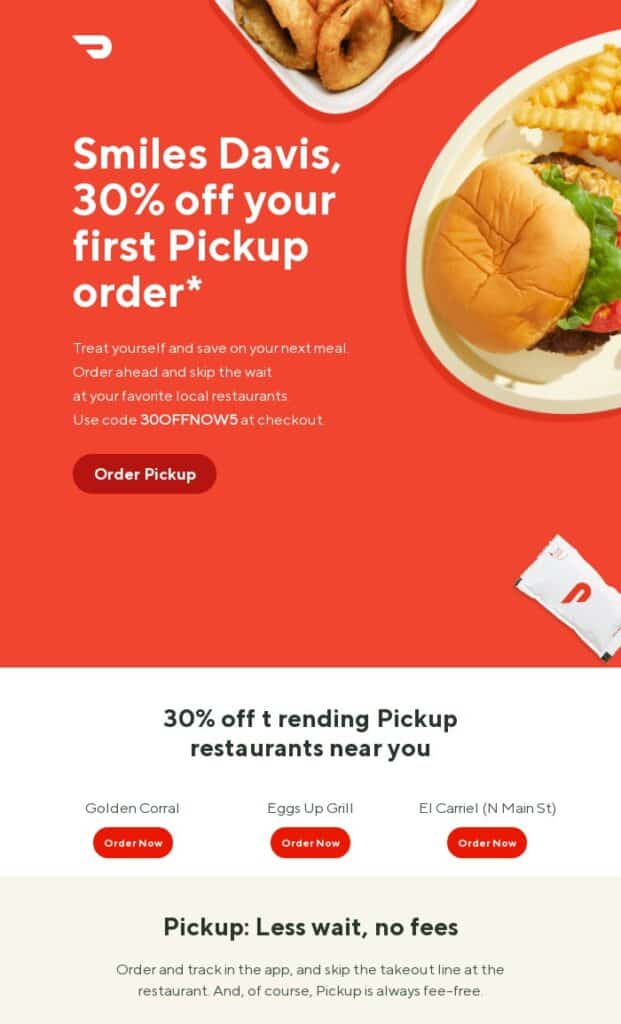
Basic: Create an automation for new customers
One of the quickest things you could do with email marketing, is create an automation that will send new customers a set of emails.
If you’re using something like Orderable, you can set up your email marketing program to send an email to a customer after they’ve received their order.
This email can thank them for their order, offer them a discount on a future order, or ask them for a review.
By doing this, you’ll add customers to your email list, more effectively than just having a signup form on your website.
Should you then have more time in the future, you can move on to the more advanced technique.
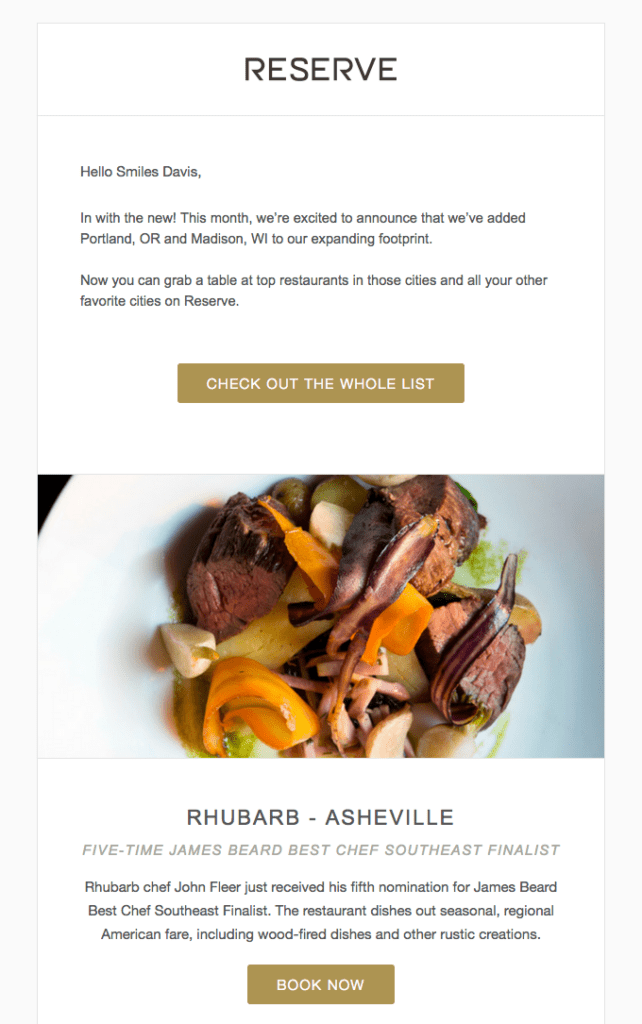
Advanced: Send regular weekly emails
We’ve added this as an advanced technique, not because it’s hard to do, but because it takes time.
Sending weekly emails to your restaurant customers is worth it to encourage restaurant loyalty, but you’ll need someone on the team dedicated to the task.
If you’re up to the task, here are some ideas for weekly restaurant emails you can send to your customers:
- Weekly specials: Highlight unique, limited-time menu items or promotions to entice customers to visit your restaurant.
- Upcoming events: Share information about live music, themed nights, or special dining experiences to create excitement and encourage reservations.
- New menu announcements: Introduce any new menu items, seasonal changes, or updates to your offerings to keep subscribers informed and excited about your restaurant.
- Upcoming holidays: Share special promotions, events, or menu items related to upcoming holidays or celebrations.
All of the above combine as part of the general marketing strategy for your restaurant business. The content of these emails should reflect the changes you regularly make to your restaurant, plans you have for menu changes, seasons, and more.
Marketing tool #4: Local search and SEO
Local search is perhaps one of the most important tools in your local restaurant’s online presence. With this in place, you’ll have a powerful restaurant marketing tool that’s specifically designed to drive customers to your restaurant.
For the purpose of this article, we’re going to focus on your Google My Business listing.
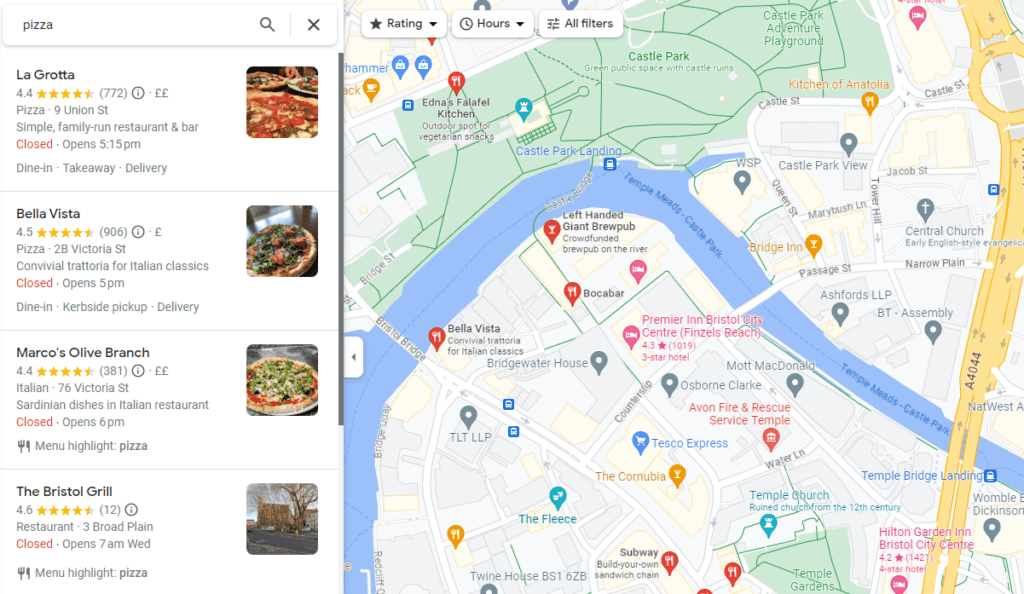
Google My Business (GMB) is a powerful tool for restaurants looking to improve their local search performance. By creating and optimizing a GMB listing, restaurants get the following benefits:
- Increased visibility: Having a GMB listing increases the chances of your restaurant appearing in local search results, Google Maps, and the local pack, which showcases the top three local businesses for a specific search query.
- Enhanced trust and credibility: A well-maintained GMB listing, complete with accurate information, reviews, and images, can boost your restaurant’s credibility and trust among potential customers, leading to more visits and reservations.
- Insights and analytics: GMB provides valuable insights into customer behavior, such as search queries, how customers find your listing, and their actions (e.g., visiting your website, calling, or requesting directions). These insights can help inform marketing strategies and decision-making.
- Showcase menu and offerings: You can upload your menu and highlight special dishes, promotions, or events directly within their GMB listing, giving potential customers a taste of what they can expect.
Local search techniques based on your time/level of skill
With the importance of local search for restaurants in mind, let’s explore different techniques you can implement depending on your time and skill level.
Basic: Claim and complete your Google My Business listing
The first step in optimizing your local search presence is to claim your Google My Business (GMB) listing. Ensure all relevant information, such as your restaurant’s name, address, phone number, and website, is accurate and up-to-date.
Add your restaurant’s hours of operation, a brief description, and high-quality images showcasing your food and ambiance.
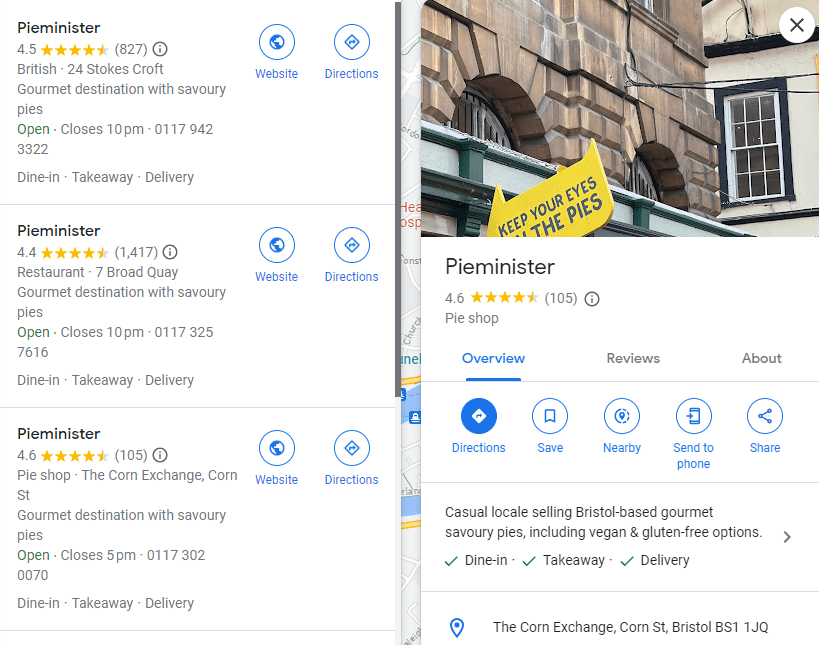
This basic step lays the foundation for a strong local search presence and helps potential customers find and choose your restaurant.
Advanced: Regularly update and engage on your GMB listing
Once your GMB listing is set up and optimized, consider regularly updating and engaging with customers through the platform. Some ideas for advanced local search techniques include:
- Google Posts: Share updates, promotions, or events directly on your GMB listing using Google Posts. This keeps your listing fresh and provides additional information and incentives for potential customers.
- Respond to reviews: Monitor and respond to both positive and negative reviews. This shows customers you care about their feedback and are dedicated to exceptional service.
- Q&A: Keep an eye on the Q&A section of your GMB listing and promptly respond to any questions from potential customers.
- Add attributes: Utilize GMB attributes to highlight unique features of your restaurant, such as outdoor seating, live music, or dietary options (e.g., vegan or gluten-free). This helps customers quickly identify if your restaurant meets their specific needs.
- Update your menu: Regularly update your GMB listing with current menus, seasonal dishes, or special promotions to keep potential customers informed and interested in your restaurant.
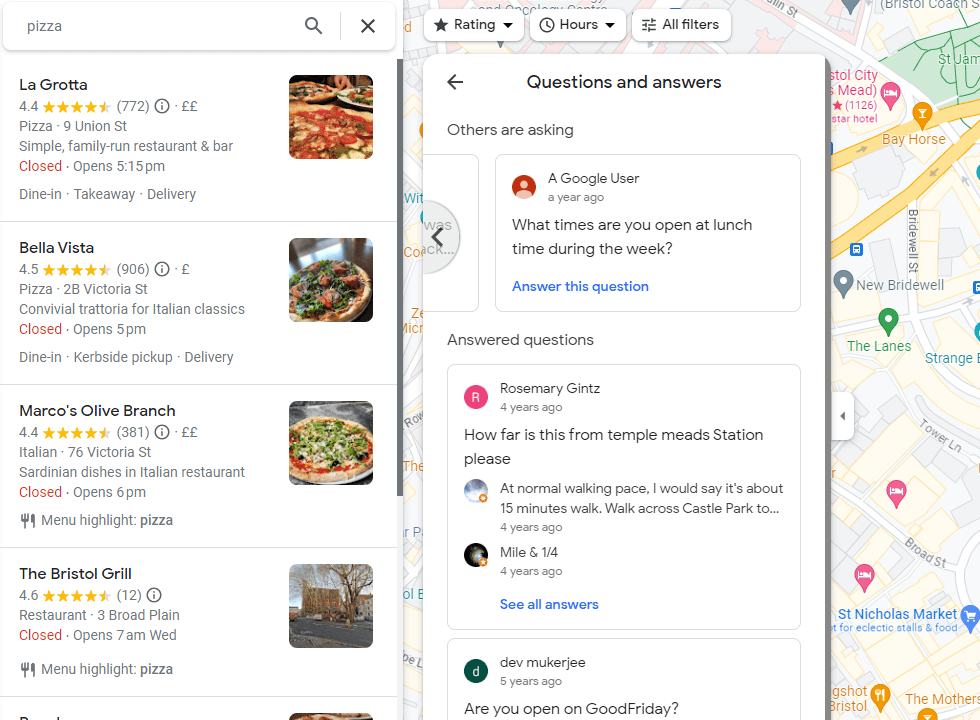
By implementing these advanced techniques, you can make the most of your GMB listing, enhancing your restaurant’s local search presence and attracting more customers.
Marketing tool #5: Online reviews
Online reviews are crucial to restaurant marketing, as they can significantly impact customer perceptions and decisions. Positive reviews can boost your reputation and drive more business, while negative reviews can deter potential customers.
Online reviews are beneficial for the following reasons:
- Enhanced trust and credibility: Positive reviews signal to potential customers that your restaurant offers quality food and service. This can help build trust and credibility, leading to more reservations, online orders, and walk-ins.
- Increased visibility: Many review platforms, including Google My Business, factor in the quantity and quality of reviews when determining your restaurant’s search ranking. A higher ranking increases your visibility and the likelihood of attracting new customers.
- Valuable feedback: Reviews provide insights into what your customers like and dislike about your restaurant. This feedback can inform improvements and help you deliver an even better experience.
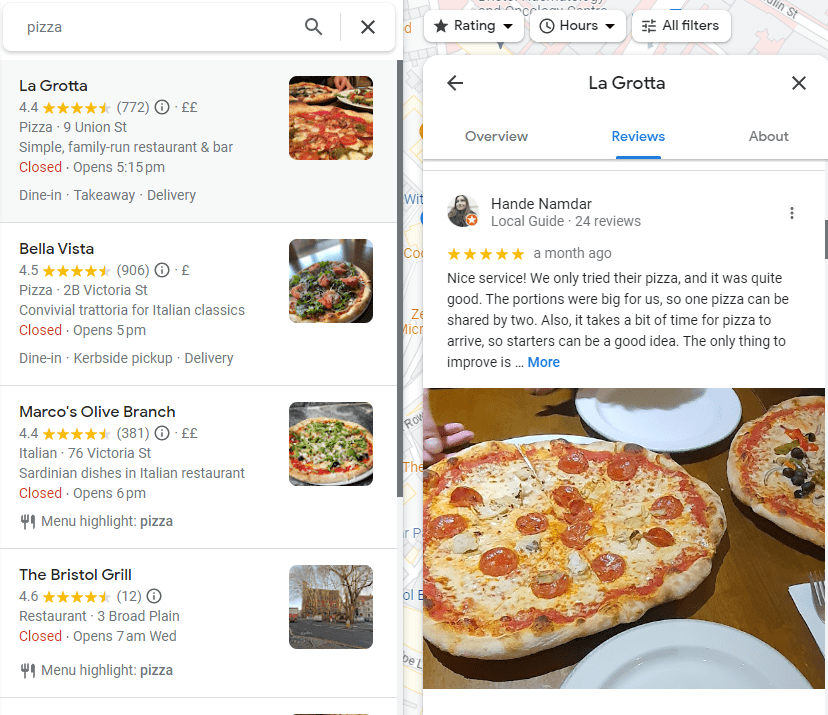
Techniques and tips for managing online reviews
Reviews are a crucial part of your restaurant’s online presence, but they still take time to monitor and manage. So here are some ways you can use this restaurant marketing tool depending on the time you have to give.
Basic: Monitor and respond to reviews
The first step in review management is to monitor them regularly. This includes checking platforms like Google My Business, Yelp, and TripAdvisor.
Respond to both positive and negative reviews in a timely and professional manner. Thank your customers for their feedback and address any concerns they may have. This demonstrates that you value their opinions and are committed to providing excellent service.
Advanced: Encourage and incentivize reviews
Once you have established a monitoring and response process, consider implementing more advanced strategies to encourage and incentivize customers to leave reviews. Some ideas include:
- Ask for reviews: Train your staff to politely ask customers for reviews after a positive dining experience. You can also include a request for reviews on your receipts or follow-up emails.
- Incentivize reviews: Offer incentives, such as discounts or small rewards, to encourage customers to leave a review. Ensure that you comply with the review platform’s guidelines regarding incentives.
- Share positive reviews: Showcase positive reviews on your website, social media, or email marketing campaigns. This promotes your restaurant and encourages others to share their experiences.
- Resolve issues quickly: When you receive a negative review, act quickly to address the issue and, if possible, turn the customer’s experience around. A swift, satisfactory resolution can sometimes lead to an updated, positive review.
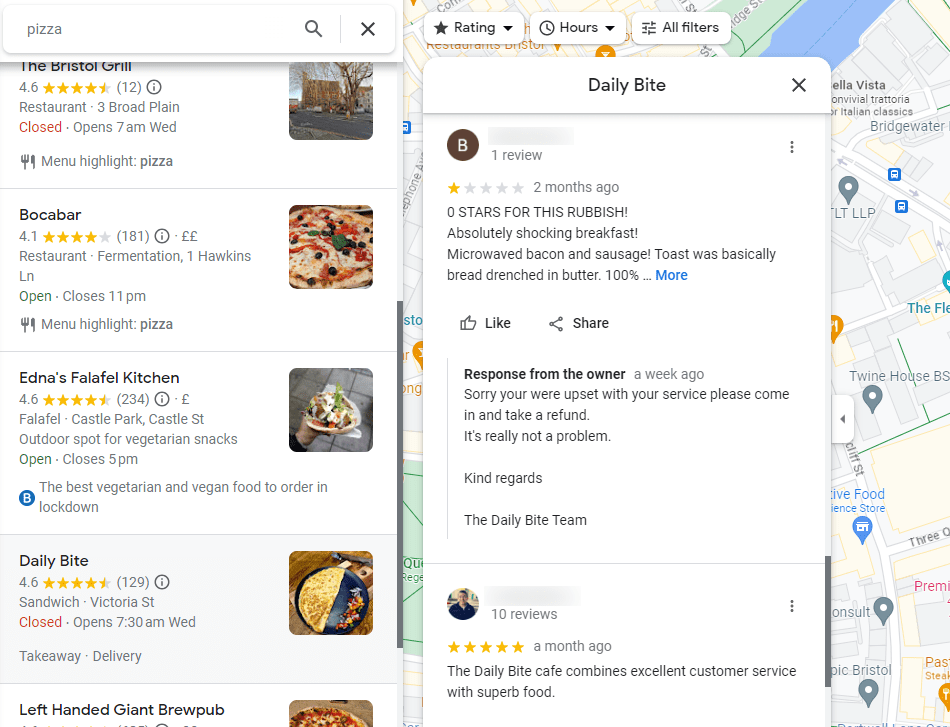
Marketing tool #6: Social media
Social media is an essential element of any restaurant marketing strategy. Platforms like Facebook, Instagram, and Twitter allow you to engage with your customers, showcase your offerings, and drive traffic to your restaurant.
Although social media can be a time-consuming task to add to your restaurant’s marketing strategy, here are some benefits you’ll get if you do:
- Increased brand awareness: By maintaining an active presence on social media platforms, you can increase your restaurant’s visibility and reach a wider audience.
- Customer engagement: Social media allows you to interact with your customers, answer their questions, and receive feedback, fostering a sense of community and loyalty.
- Showcase your dishes: Share images and videos of your dishes, promotions, and events to entice potential customers and keep your existing customers coming back.
- Drive traffic and reservations: Use social media to share special offers, promotions, and events, encouraging customers to visit your restaurant or make reservations.
Social media marketing techniques based on your time/level of skill
With the importance of social media for restaurants in mind, let’s explore different techniques you can implement depending on your time and skill level.
Basic: Set up your social media profiles and post essential updates
The first step is to set up your restaurant’s social media profiles on platforms like Facebook, Instagram, and Twitter. Ensure that all relevant information, such as your restaurant’s name, address, phone number, and website, is accurate and up-to-date. Add your restaurant’s hours of operation, a brief description, and high-quality images showcasing your food and ambiance.
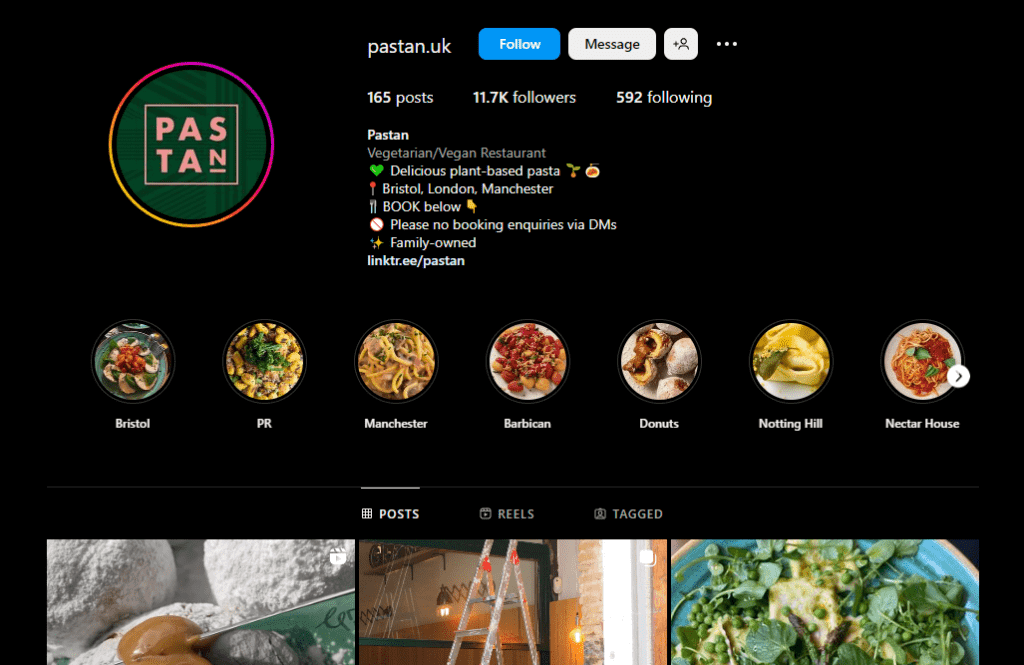
At this basic level, focus on posting essential updates, such as your online menu, opening times, and important announcements. This will help potential customers find and choose your restaurant.
You don’t need to do anything more than this if you don’t have the time. But these basic steps will keep you visible on these platforms.
Advanced: Regularly update and engage on your social media profiles
Once your social media profiles are set up and optimized, consider regularly updating and engaging with customers through these platforms. Some ideas for advanced social media techniques include:
- Share engaging social media posts: Post high-quality images and videos of your dishes, behind-the-scenes glimpses, and events to showcase your restaurant’s unique atmosphere.
- Respond to comments and messages: Monitor and respond to comments and direct messages from customers, showing that you value their feedback and are committed to providing excellent service.
- Use hashtags and location tags: Utilize relevant hashtags and location tags to increase the visibility of your posts and reach a broader audience.
- Run promotions and contests: Create special offers or contests to encourage engagement and reward your followers.
- Collaborate with influencers: Partner with local food bloggers or influencers to promote your restaurant to their followers.
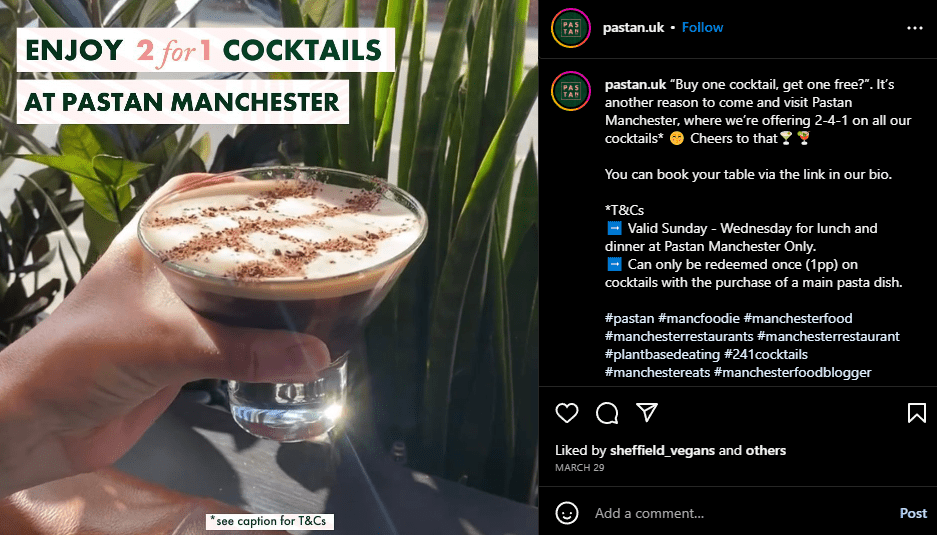
By implementing these advanced techniques, you can make the most of your restaurant’s social media presence, enhancing your online visibility and attracting more customers.
Get to grips with these restaurant marketing tools today
So there we have it! Six restaurant marketing tools you can use to see success in your restaurant’s online marketing and sales.
Depending on the time and resources you have as a business, you can use any of these in their basic or more advanced form.
Restaurant marketing should be sustainable. So add these tools one-by-one and monitor them as you go to ensure they’re working effectively.
And if you’re starting from the ground up, get your restaurant website up and running and take orders with Orderable.
Don’t miss out on the latest Orderable news!
Sign up for our newsletter to receive the latest news from the blog, you’ll get pinged every week with a digest of the latest updates.

Related Articles
How to Create a QR Code for Your Restaurant Menu
Restaurant Food Photography Tips for More Sales
How to Create an Online Pizza Ordering System
Get Your Restaurant Online With Orderable
The WooCommerce plugin designed to help restaurants take orders online – with no added fees!
View Pricing
